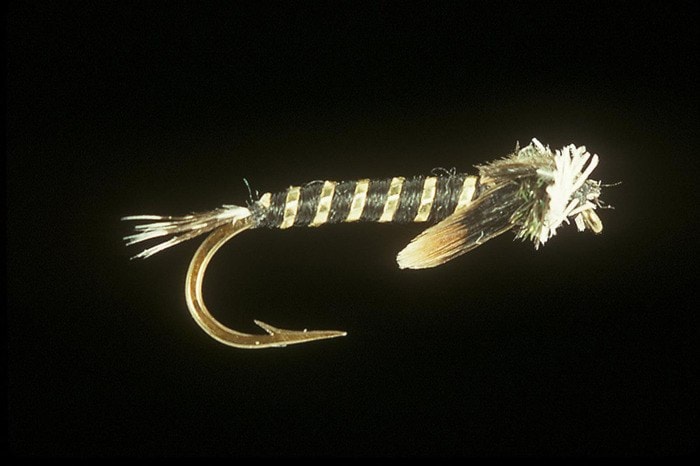Historically, as I recall, dry line chironomid fishing in British Columbia started in the mid '60s and early '70s at about the same time Jack Shaw was doing his original work with wet lines. I am not certain who really got it going but I do know that a group of fly fishers who made a habit of fishing Leighton and Tunkwa lakes (Kamloops) were avid practitioners of dry line chironomid fly fishing.
Tom Murray, a well-known local fly fisher, was in that pioneer group. They fished fairly shallow lakes with long leaders and dry floating fly lines. Among our local lakes there is a group of chironomid fly fishers based around Parksville and Nanaimo who do very well with this method. I have also done well with this method on Spider Lake. I may be wrong, but I am convinced this method of fly fishing could be adapted to successfully fish Kokanee in Vancouver Island lakes and the Interior.
The next phase in the development of this highly specialized type of fly fishing was the addition a strike indicator on a long leader. A strike indicator is a float or bobber associated with dry line fly fishing. It is a small float that is attached to a long leader, allowing the angler to fish depths of up to 50 feet. In Sheridan Lake near 100 Mile House they catch very large trout using this method. Most people use 10- to 20-foot leaders. Several fly patterns are used.
In the pupa stage, chironomid insects must be quite active in the lower depths of the lake before emerging as adults by a slow migration to the surface. There are millions of them and they form a large part of trout diets in most lakes. The flies we tie to represent them are small sizes ranging from #12 down to #18 in most situations.
These flies are slim patterns designed to slowly sink through the water column. In the case of fishing with a strike indicator and leaders in excess of 20 feet at times, casting becomes a challenge. Fly rods designed for this speciality are often 10-feet long with quite soft actions. To assist the fly in sinking, a small swivel may be tied up to five feet from the end of the leader.
This type of fly fishing is not for the beginner and is a classic case of the saying - “It is about fishing – not catching fish.” If you wanted to try this method yourself and have trouble casting long leaders try this little trick: Rig your dry line with an appropriate strike indicator set-up, put the set-up over the side of the boat, play out some line and move a few feet from the strike indicator and put down your anchors. Or if it is calm just simply float around in the area you are fishing and watch the strike indicator like a hawk, and at the indication of a strike – set the hook!
I am not certain why, but trout taken by deep-line chironomid fishing tend to be quite large. Trout in the three- to five-pound range are frequently taken in Spider Lake by using the deep line techniques on either wet or dry lines.
Deep line fly fishing with dry lines requires long rods and reasonably good fly casting skills. There are, however, simple ways to get around the long casting challenge by putting your fly on a long leader and letting it out over the stern. Then row away from the leader while playing out line. After you have rowed 60 to 70 feet from your leader just stop and let the fly slowly sink while your floating line stays on the surface. After about a minute slowly retrieve the fly and watch movement of the tip of the floating line for a strike.
Good luck!
Ralph Shaw is a master fly fisherman who was awarded the Order of Canada in 1984 for his conservation efforts. In 20 years of writing a column in the Comox Valley Record it has won several awards.
